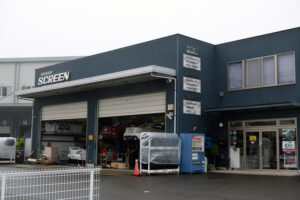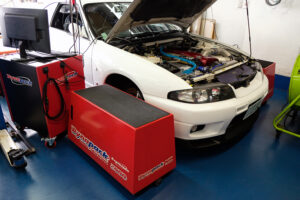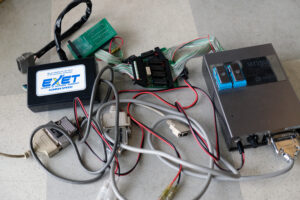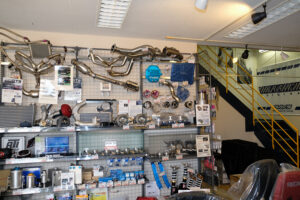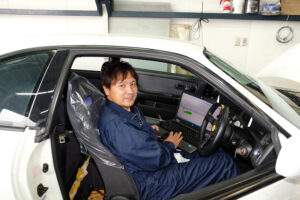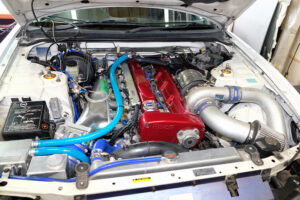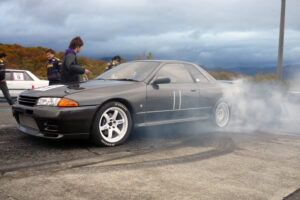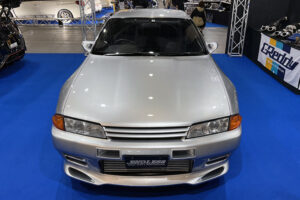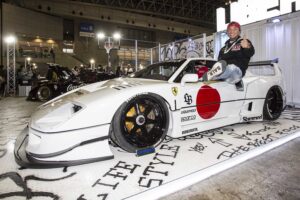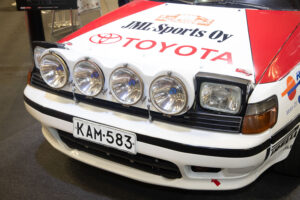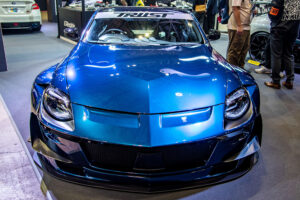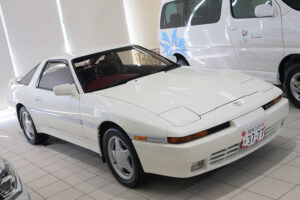A Tuner tells the story of a reliable race car that remains close to his heart
This car was the catalyst for me to remember the excitement of drag racing that I had almost forgotten. The fact that I can remember the old days as if they were yesterday is largely due to the great relationship with the car. Mr. Chiba, owner of “Screen”, a pro shop in Miyagi Prefecture, talks about his unforgettable car.
Fascinated by heavy machinery and motorcycles from an early age
“My grandfather was a heavy equipment operator, so I was familiar with bulldozers and shovels from a young age. I loved construction vehicles because they looked like the vehicles used by Sentai (squadron) hero TV dramas,” said Hiroshi Chiba, president of Screen. Oddly enough, his father was not interested in cars, and his grandfather had a great influence on him. Though growing up in the lush greenery of Miyagi, Mr. Chiba wasn’t interested in nature, insects, and fish.
There were plenty of playgrounds, so from the time I entered primary school, I rode around on my pocket bike. I also began to enjoy riding a 50-cylinder geared motorbike when I was in second grade”.
He also bought a red and black DR30 at the age of 17. Of course, he was influenced by the TV drama “Seibu Keisatsu (西部警察)”. Even before he got his driving license, he tuned up his FJ20 with the help of an older colleague, eight years his senior, who worked in a garage.
He said: “At the time, my senior, who drove a Skyline GT-R S20, tuned it in his spare time away from work. I used to visit him, so tuning became a familiar part of my life. I decided to tune my first car as well.”
From engine completion to 0-400 soon after getting driving license
The engine was finished just in time for him to get his driver’s license. The displacement was increased to 2.2 liters with Tomoe’s 2mm oversized pistons, and the ports and rods were polished to a shine. The injection was changed to a 44Φ Solex and a Trust muffler was chosen. The barn of his parents’ house was the workplace.
Immediately after completion, he entered the street 0-400 at Sendai Shinko. Under the guidance of his seniors, he beat a DR30 with similar specifications. Feeling good, he also introduced a 74-degree cam. However, this was unexpectedly difficult and did not go well. That’s how effective the cam was, he realized.
As soon as he got his license he was hooked on tuning and 0-400. His job at the time was as a mechanic at a Suzuki dealership and every day he would leave work quickly and go to the shed to do nothing but tuning.
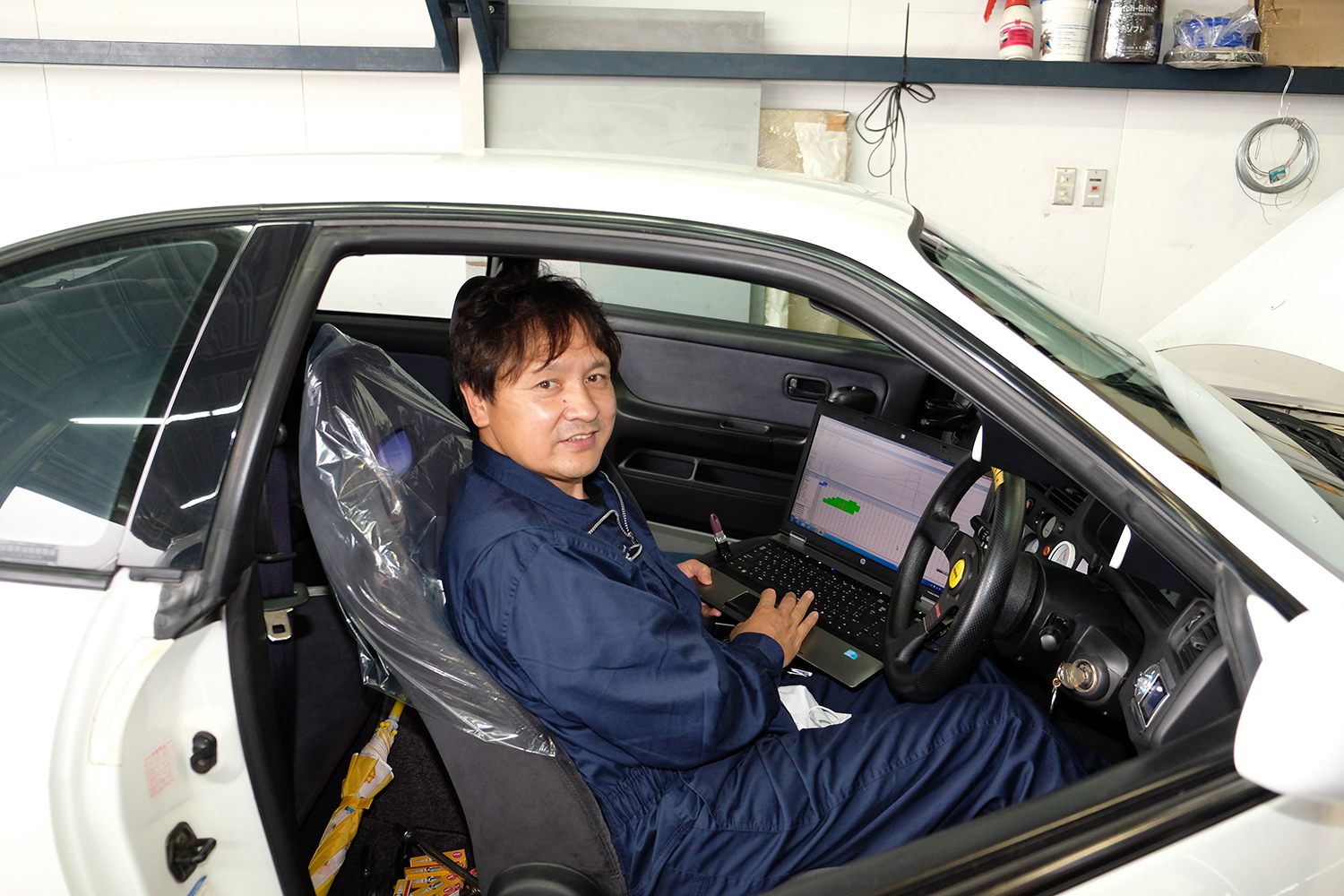
Although the FJ20 had the appeal of explosive power as a 4-cylinder, he couldn’t win a 3-litre car. A year later he switched to the S130Z. The engine was changed from L20 to L28, initially a Solex 44Φ 3-litre with NA 250hp specification. Later it was upgraded to 3.1-litre with Solex 50Φ for 300hp.
Immersed in tuning with anti-GT-R spirit
However, this was the time when the R32 made its debut and NA couldn’t win. So, he decided to turbocharge the car. After several modifications, the TD06 twin was up to 600 bhp. It was quite fast,” said Chiba.
The year a drag strip was built at Sendai Highland, he set a record of 11.3 seconds with this car. He became the record holder in the street class that first year. The following year, however, it was easily overtaken by a friend’s 3.1-liter TD08-spec Skyline, ”Hakosuka”.
At the age of 21, he quit his job at the dealership and went to work for a car parts wholesaler owned by his cousin. Not only was he able to buy parts through the company’s sales, but he also received information on the latest tuning parts. At the time, he was driving S130Z, S13, S14, and other Silvia, tuning them to beat the GT-R.
“I was anti-GT-R. I had a strong desire to somehow beat a car that was believed to be fast. That was the driving force that got me into tuning.”
He also took the order of tuning his friends’ cars, and it became more than just a hobby. It was age of 26 that he turned it into a career. He set up a factory next to his parent’s house and opened “Screen”. Two years later he installed Dynapac and improved his tuning skills. I felt like a professional tuner.
He said: “I became more reliable because I could test differently like how to accelerate and how to apply boost. I didn’t break cars anymore”.






